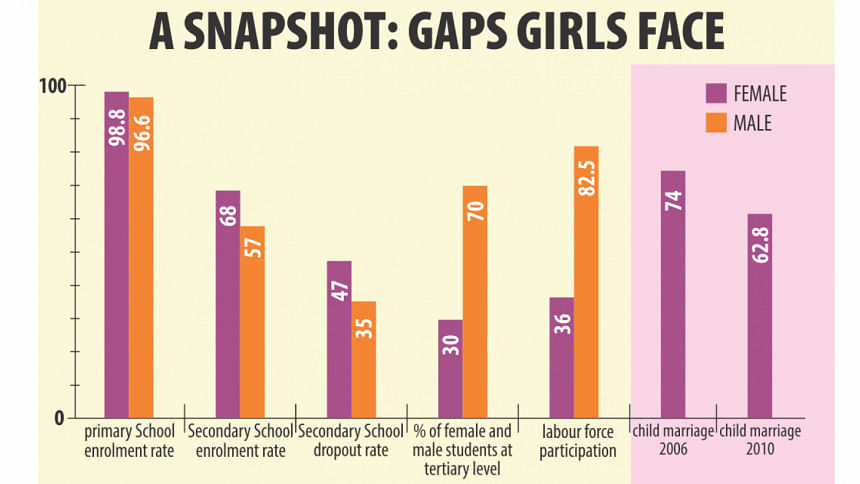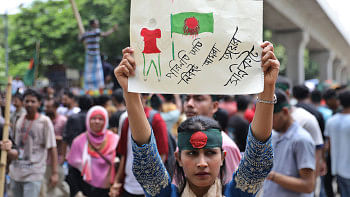The Power Of The Adolescent Girl: Vision For 2030

Commemorated for the first time in 2012, the International Day of the Girl Child highlights the importance of promoting girls' rights, eradicating gender inequalities that remain between girls and boys, and addressing the various forms of discrimination and abuse suffered by girls around the world. Gender inequality and the discrimination and abuse experienced by girls perpetuate intergenerational poverty and form the basis of high levels of violence, especially gender-based violence, as well as challenges in the delivery of equitable and sustainable development for all. When discrimination and violence against adolescent girls become the norm, it not only affects overall development, but also limits opportunities and choices, health and wellbeing and the future of adolescent girls. Reducing adolescent girls' vulnerability to violence is vital. To do this, we need to raise awareness amongst all about the inherent value of girls, and challenge those social norms which perpetuate gender inequality
The theme of the International Day of the Girl Child for 2015 is, aptly - given the adoption of the Sustainable Development Goals (SDGs) – the “Power of the Adolescent Girl: Vision for 2030.” This theme recognises the importance of investing in the adolescent girl – in her education, health, nutrition, social skills – so that 15 years from now, adolescent girls of today will be healthy, educated, skilled and employed women. Investing in adolescent girl also makes the achievement of equitable and sustainable development outcomes more likely. It also ensures that one-half of humanity is given the same opportunities as the other half and can contribute equally to the overall development in the social, economic, political and environmental spheres around the world.
In Bangladesh, significant progress has been made in improving the lives of adolescent girls. The enrolment of girls in primary education is near universal and secondary education is a promising 68 percent (BANBEIS 2014). However, the dropout rate is also high at 47 percent (BANBEIS 2014), indicating that a majority of adolescent girls do not complete secondary school. It is important to accelerate our efforts to ensure the availability of quality education and encourage adolescent girls to complete their secondary education. The high prevalence of child marriage, a significant problem which affects the overall development of Bangladesh, and is closely linked to the high dropout rates from secondary education, stands at 63 percent (MICS 2012-2013). The adolescent fertility rate of ever-married women aged 15-19 years, at 113 per 1,000 live births (BDHS 2014), is the highest in South Asia and needs to be halted to improve the overall health and wellbeing of adolescent girls. In Nepal, as in Bangladesh, women marry at a young age, yet Nepal's adolescent birth rate is far lower than that of Bangladesh. The adolescent birth rate in Indonesia, Cambodia and India is 58 percent, 50 percent and 20 percent lower, respectively, than in Bangladesh. The Contraceptive Prevalence Rate (CPR) for married adolescents aged 15-19 years is 51 percent (BDHS 2014), less than the national CPR at 62 percent (BDHS 2014), pointing to another area which needs additional investment. Bangladesh is currently experiencing a one-time “demographic window of opportunity”, that can be transformed into a “demographic dividend”, provided the right investments are made in young people, as they now constitute 30 percent of the total population. This population cohort will continue to grow in absolute terms as the country adds at least 50 million more people to reach a staggering total population of minimum 200 million by around 2041, even as fertility rates continue to decrease below replacement levels.
Reaching middle income country status, a clear goal of the Bangladesh Government to be achieved by 2021, requires a strong and healthy workforce – of both young men and women. Adolescent Bangladeshi girls have a right to be provided relevant education and training, life skills and access to health care, and overall access to economic opportunities, to facilitate their positive contribution to the country's economy and development. These girls must be encouraged to stay in school so that both the high prevalence of child marriage and adolescent fertility rates decline. If a large segment of this productive young population is lost to child marriage and early motherhood, Bangladesh will lose a vital asset in the country's development agenda – threatening the realisation of “Vision for 2030.”
On this special day, dedicated to highlight the wellbeing of the adolescent girl, it is important for all development actors and the private sector in Bangladesh to recognise and commit to the “Power of the Adolescent Girl: Vision for 2030.” As detailed by the United Nations, it is important to: invest in adolescent girls' education, health and jobs; promote zero tolerance against physical, mental and sexual violence; combat child marriage; encourage civic and political engagement; and promote gender-responsive legislation.
Building on the commitments made at the Girl Summit in London in 2014, we know that unlocking the potential of girls will generate substantial benefits not just for the girls themselves, but for their families and communities, for the economy and for Bangladesh.
This sponsored op-ed has been written jointly by UNFPA, UNICEF, USAID, BRAC, Plan International Bangladesh, Department for International Development UK Government, Save the Children International in Bangladesh, the Delegation of the EU to Bangladesh, and Mahila Parishad to mark the International Day of the Girl Child on October 11, 2015.

 For all latest news, follow The Daily Star's Google News channel.
For all latest news, follow The Daily Star's Google News channel. 



Comments